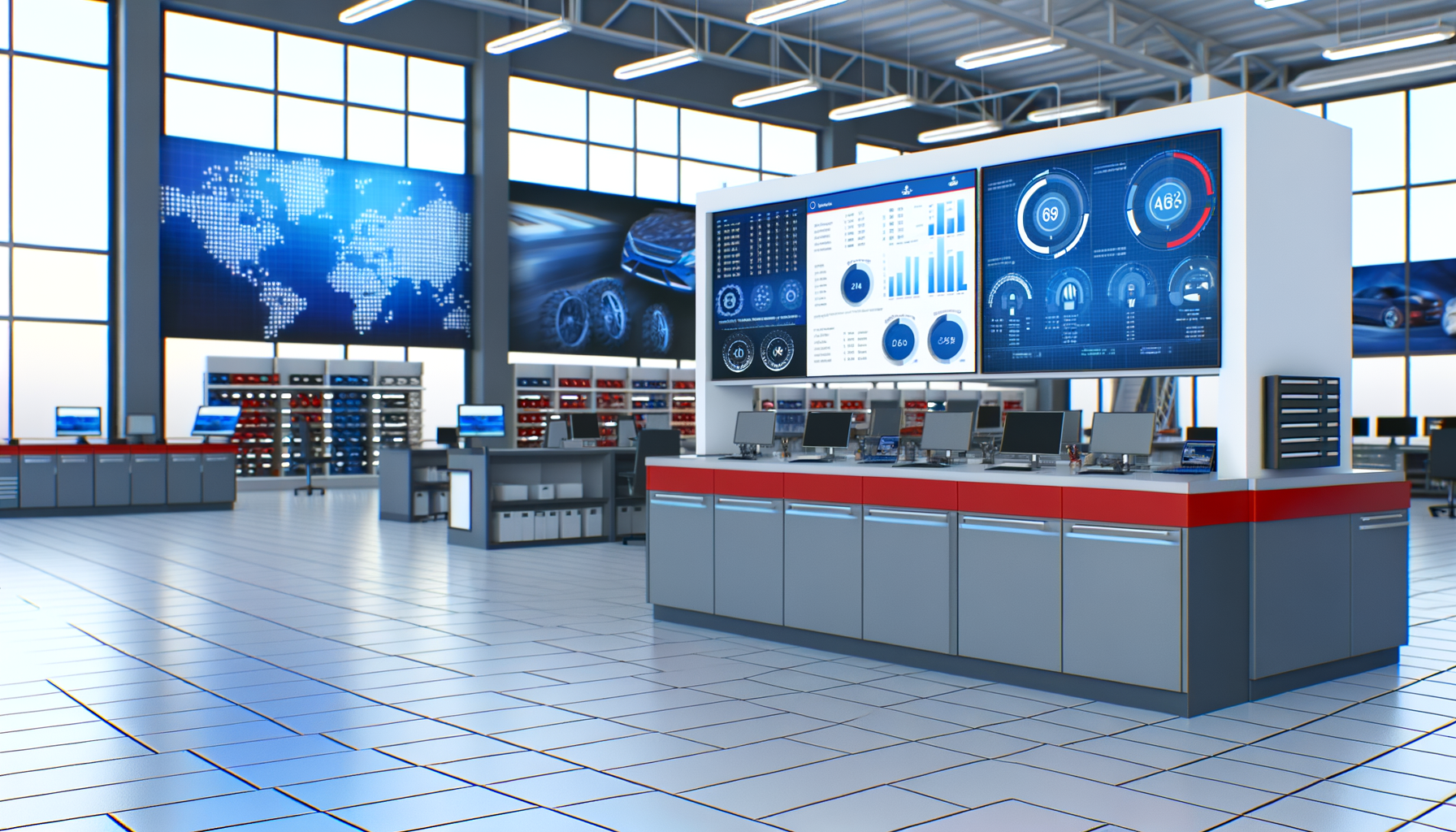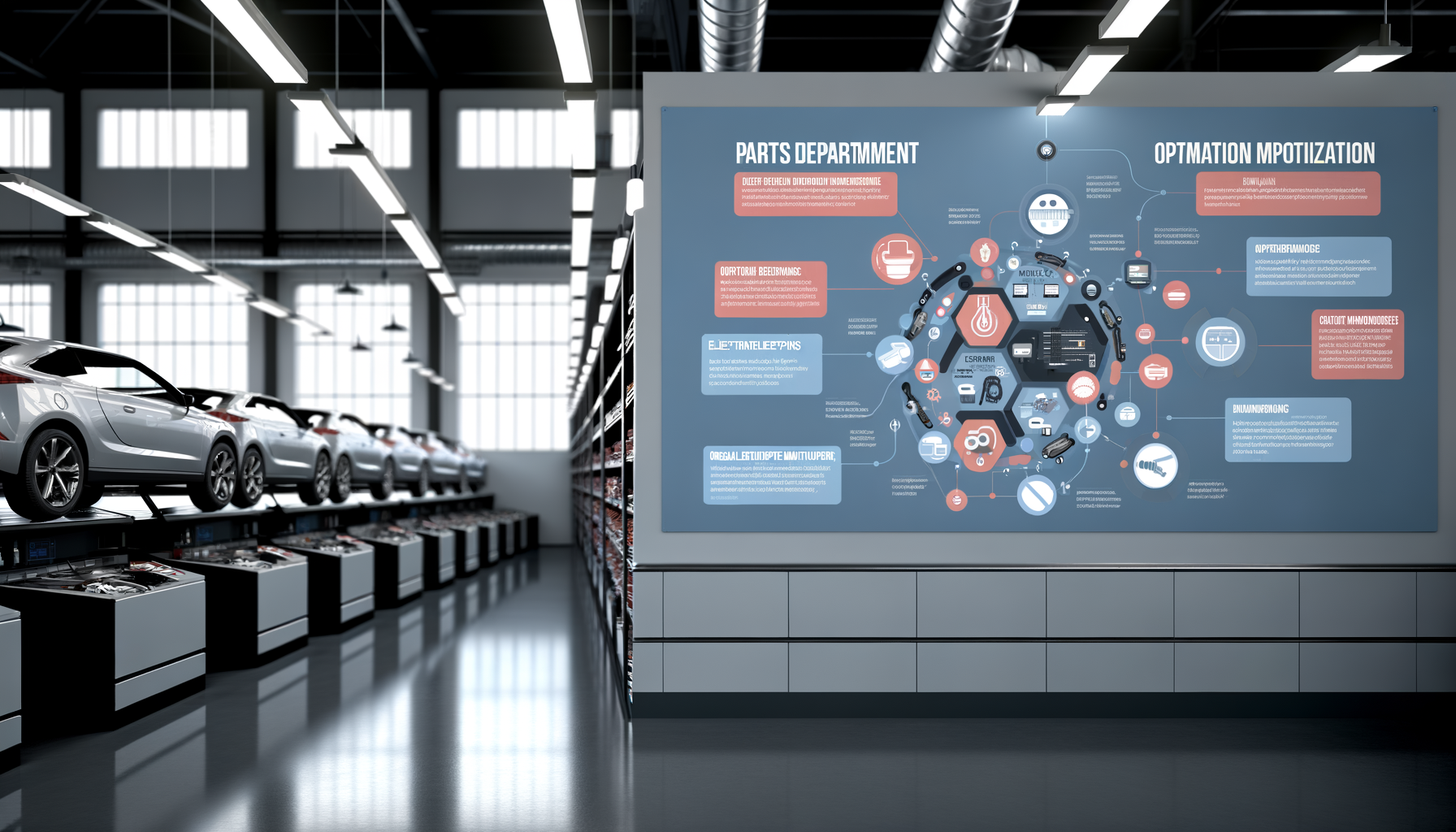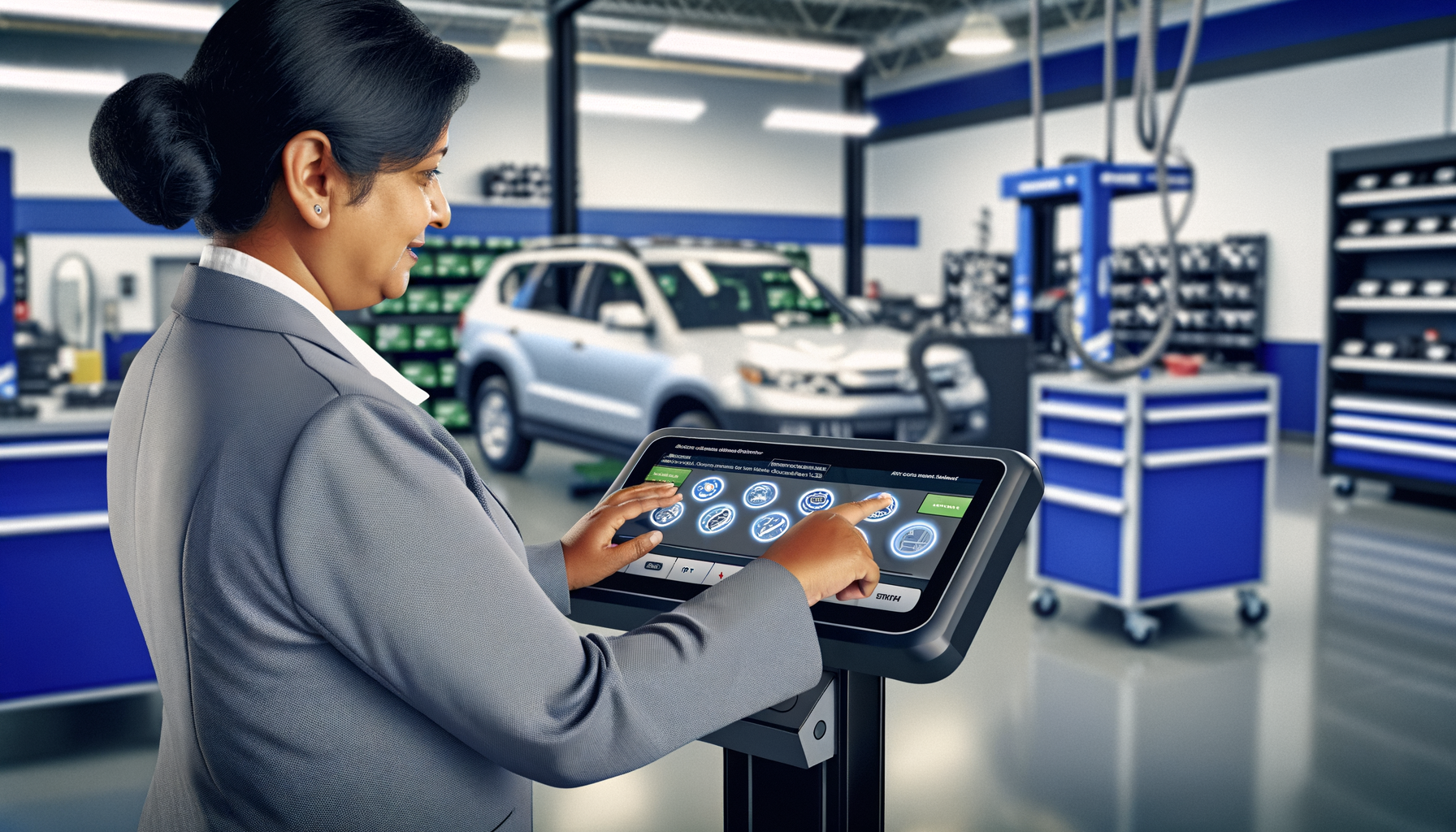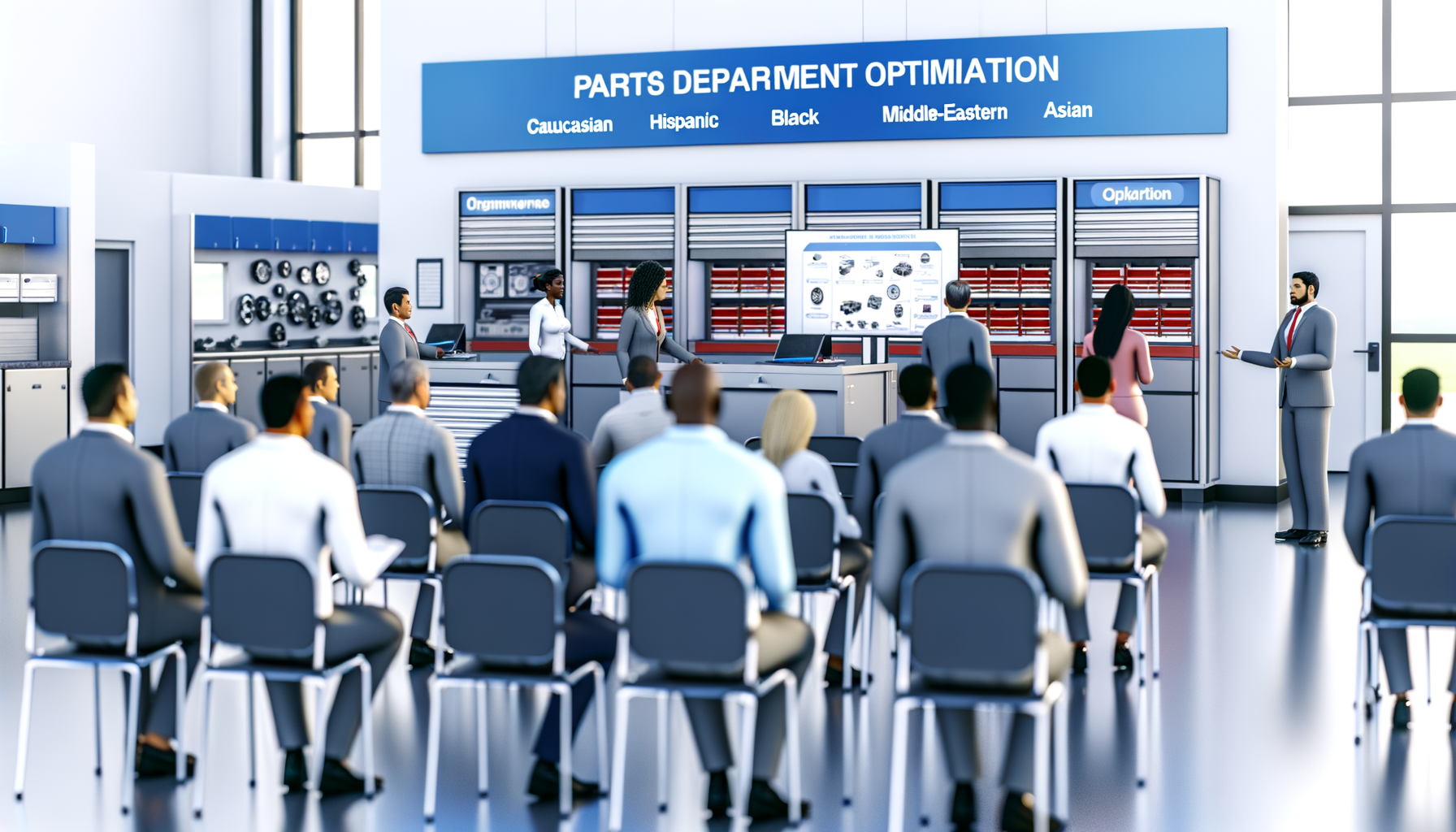Beyond the Counter: Crafting a Parts Department That Drives Dealership Success

Understanding the Current Parts Department Landscape

In 2025, the automotive parts department operates in a dynamic environment where EV-related repairs are increasing by 15%, challenging traditional inventory strategies.
Service departments must navigate new OEM training requirements, as 68% of customers prefer digital service scheduling, emphasizing the need for tech-savvy operations.
Understanding these trends allows dealerships to align their strategies with current demands and future-proof their operations.
Strategic Inventory Management Techniques

Effective inventory management is vital in reducing obsolescence and maximizing parts turnover. Implementing Just-In-Time (JIT) inventory can significantly reduce holding costs.
Forecasting models using historical sales data and seasonal trends allow service managers to anticipate demand accurately.
Consider a three-step approach: Analyze historical data, implement adaptable JIT systems, and continuously optimize based on real-time insights.
Enhancing Customer Interactions through Technology

With 68% of customers preferring digital channels, integrating CRM systems for seamless communication is no longer optional.
Implement online parts ordering and tracking systems to enhance customer convenience and satisfaction.
Educate your staff on using these tools to provide personalized service, which fosters loyalty and repeat business.
Staff Training and Retention: Building a Resilient Team

High staff turnover can disrupt parts department operations, impacting both customer service and inventory management.
Develop comprehensive training programs that include both technical skills and customer service excellence.
Retention strategies should focus on continuous learning opportunities and career progression paths.
Leveraging Data Analytics for Performance Insights

Data analytics is a powerful tool for uncovering inefficiencies and identifying opportunities for improvement in parts operations.
Utilize analytics to track key performance indicators (KPIs) such as inventory turnover rates and service delivery times.
Implement a dashboard system for real-time analytics, enabling informed decision-making and strategic planning.
Embracing Automation in Parts Operations

Automation can streamline repetitive tasks, reduce errors, and free up staff for more customer-focused activities.
Consider implementing automated inventory systems and predictive maintenance alerts.
Assess the initial investment against long-term savings and operational efficiency gains.
Measuring Success: KPIs and ROI Calculations

To evaluate parts department optimization, focus on KPIs such as inventory turnover, gross margin return on inventory, and service efficiency.
Calculate ROI by comparing the cost of optimization initiatives against the revenue increases and cost savings achieved.
Conduct regular reviews to ensure that optimization efforts align with business objectives and market conditions.
Related Topics
Ready to take your service department to the next level?
Schedule your demo today and experience the power of Auto Pro Solutions.
Schedule Demo